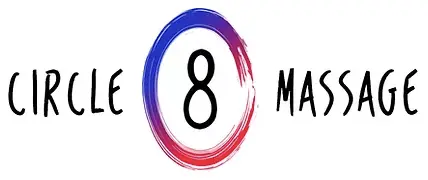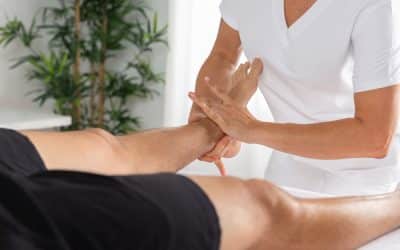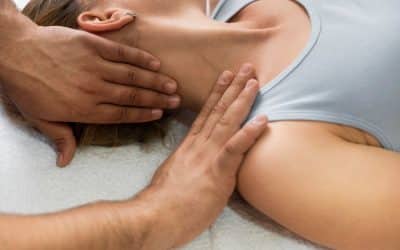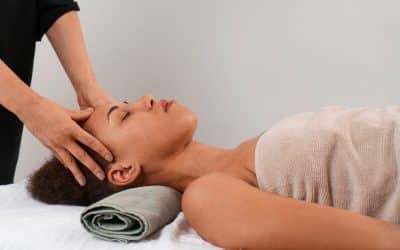Whether you’re an athlete or someone who enjoys the occasional game of football or tennis, sporting injuries are an unfortunate reality for many. The good news is that with the right approach to recovery, including targeted massages, you can reduce pain, improve mobility, and get back to your sport sooner.
Why Massage is Essential for Recovery
Massage therapy plays a vital role in the recovery process for sports-related injuries. It offers a range of benefits, including:
- Improved Circulation: Massage promotes blood flow, which helps to deliver oxygen and nutrients to the injured area, speeding up the healing process.
- Pain Relief: Certain massage techniques can reduce muscle tension and alleviate pain.
- Reduction of Scar Tissue: Regular massage can prevent the build-up of scar tissue, which can limit flexibility and cause discomfort.
- Increased Flexibility: Massage helps to release tension and maintain the range of motion, which is particularly important during recovery.
Let’s dive into the specific types of massages that are most effective for sporting injuries.
Deep Tissue Massage
What It Is
Deep tissue massage focuses on the deeper layers of muscle and connective tissue. This technique uses slow strokes and firm pressure to address tension and adhesions within the muscles.
Benefits for Sporting Injuries
- Reduces chronic muscle tension.
- Breaks down adhesions (knots) that can form after injuries.
- Improves mobility and flexibility.
When to Use It
This massage is ideal for conditions like muscle strains or after the acute phase of an injury when the initial inflammation has subsided.
Sports Massage
What It Is
Sports massage is specifically designed for athletes and is tailored to the needs of active individuals. It includes techniques like compression, stretching, and cross-fibre friction.
Benefits for Sporting Injuries
- Alleviates muscle soreness.
- Improves range of motion.
- Prevents future injuries by identifying and addressing areas of tension.
When to Use It
This massage can be used both as a preventative measure and as part of a rehabilitation programme after an injury.
Swedish Massage
What It Is
Swedish massage is a gentler form of massage that uses long, flowing strokes to relax the body and mind.
Benefits for Sporting Injuries
- Reduces stress and promotes relaxation.
- Improves circulation, aiding the delivery of nutrients to injured areas.
- Relieves general muscle tension.
When to Use It
This technique is best suited for mild injuries or as a complementary therapy to other treatments.
Trigger Point Therapy
What It Is
Trigger point therapy targets specific “trigger points” or tight knots within the muscle fibres that can cause referred pain to other areas of the body.
Benefits for Sporting Injuries
- Relieves pain caused by muscle knots.
- Improves muscle function.
- Reduces tension and promotes faster recovery.
- When to Use It
This method is ideal for addressing localised pain, such as in cases of shin splints or runner’s knee.
Myofascial Release
What It Is
Myofascial release focuses on releasing tension in the fascia, the connective tissue that surrounds muscles and organs.
Benefits for Sporting Injuries
- Eases tightness in the fascia.
- Improves mobility and reduces stiffness.
- Helps with chronic pain issues related to repetitive strain.
When to Use It
This technique is suitable for injuries caused by overuse, such as tennis elbow or plantar fasciitis.
Tips for Maximising Your Massage Benefits
- Consult a Professional: Always work with a qualified massage therapist experienced in sports injuries.
- Communicate Clearly: Let your therapist know the location and severity of your injury.
- Follow Up with Stretching: Gentle stretching can help maintain the benefits of the massage.
- Stay Consistent: Regular sessions can enhance recovery and prevent future injuries.
Incorporating Massage into Your Recovery Plan
While massage can be incredibly effective, it’s most beneficial when combined with other recovery strategies. These may include physiotherapy, rest, ice, compression, and elevation (RICE), as well as a gradual return to physical activity. Listen to your body and give it the time it needs to heal.
Conclusion
Sporting injuries can be frustrating, but with the right recovery plan, including targeted massage techniques, you can be back on your feet and performing at your best in no time. Whether you’re dealing with a minor strain or recovering from a more serious injury, massage therapy offers a natural, effective way to support your healing journey.
Book a session with a professional massage therapist today and experience the benefits for yourself.







